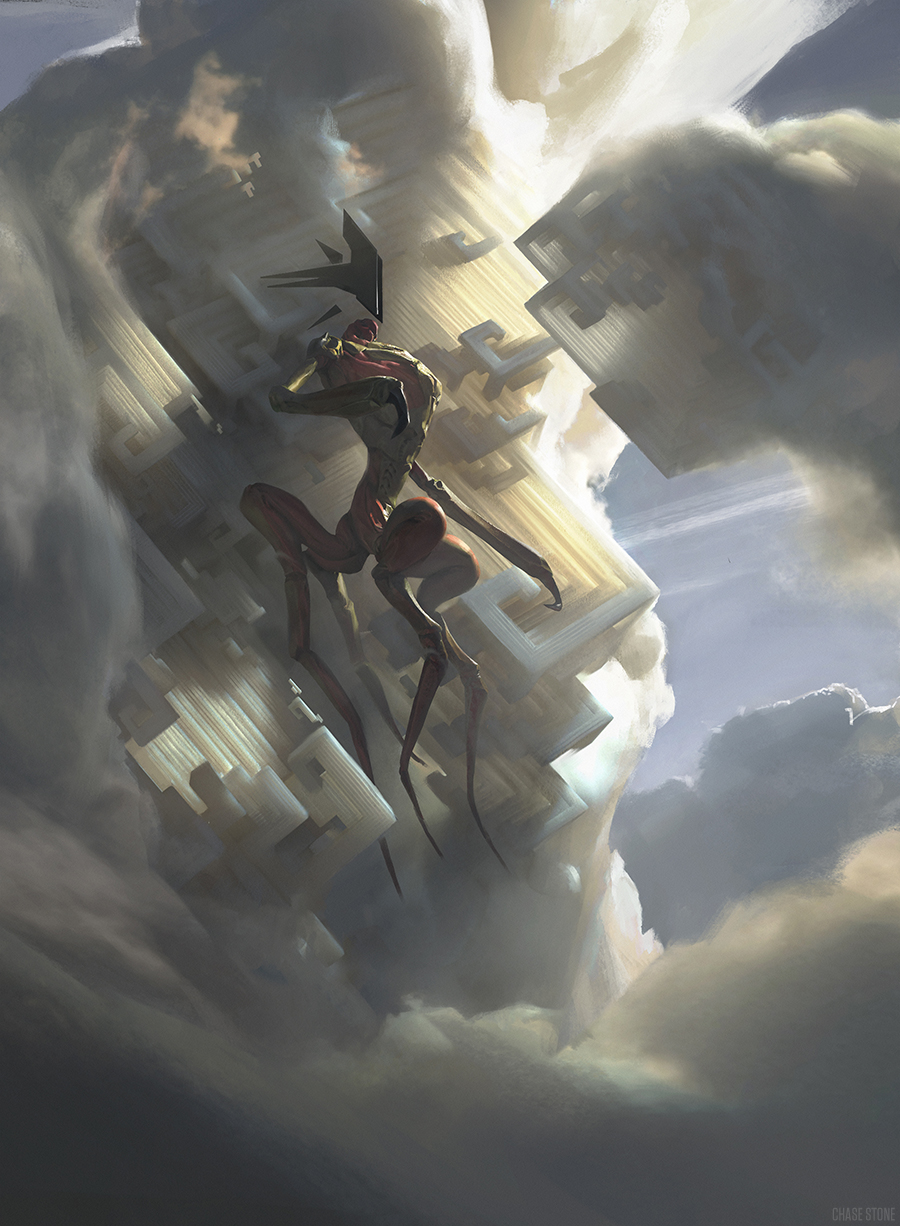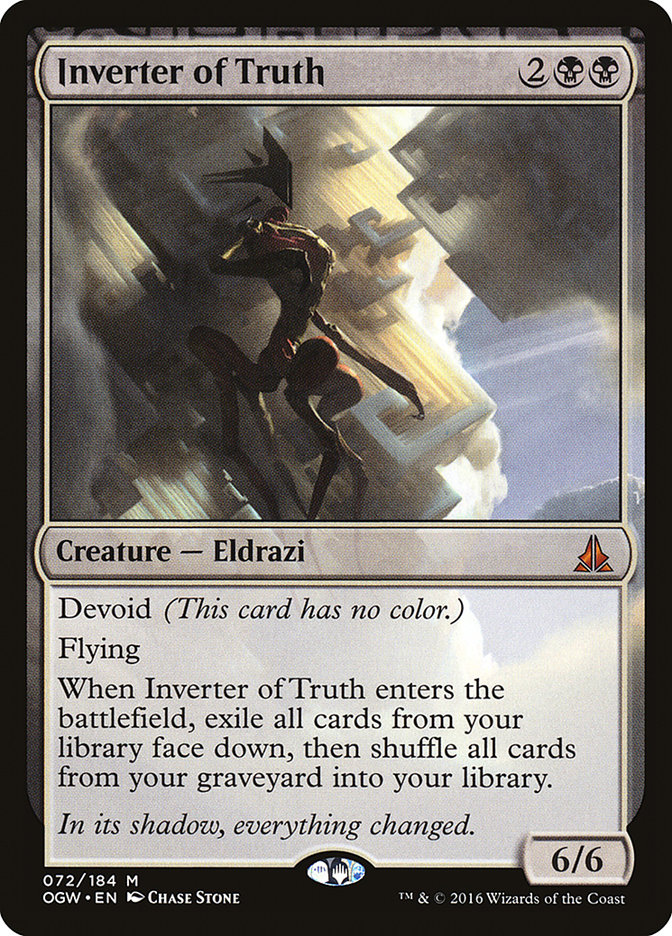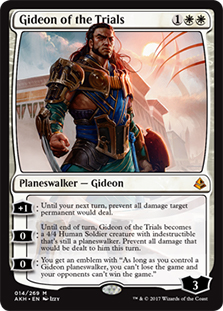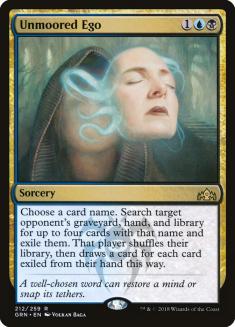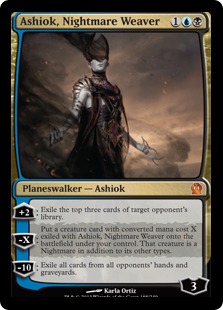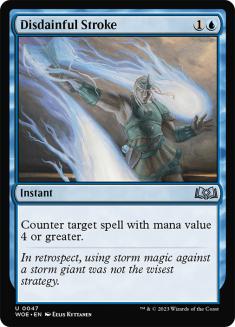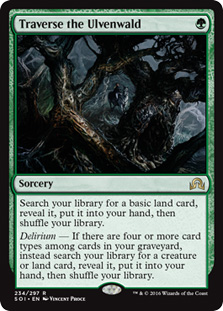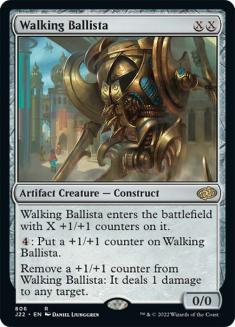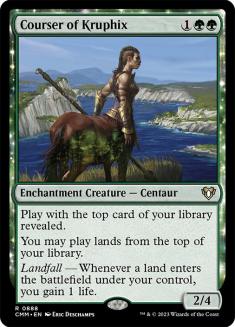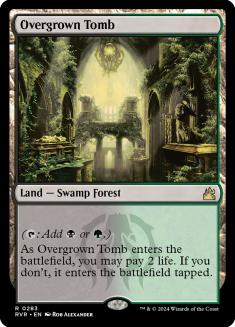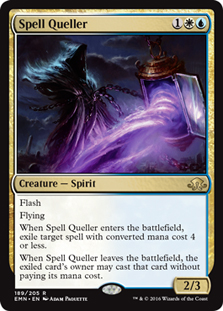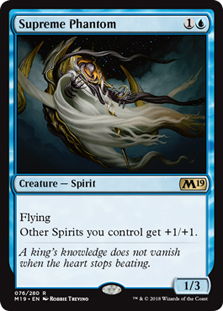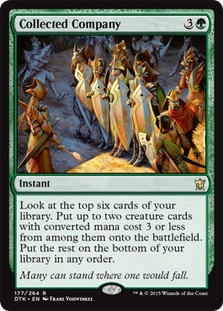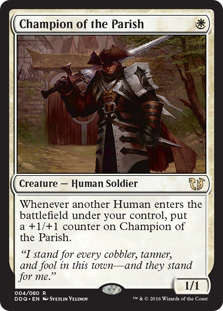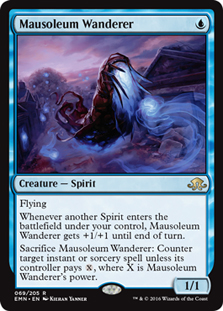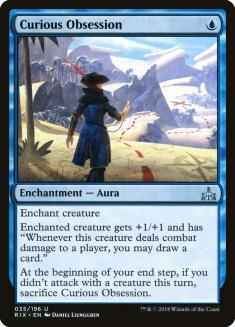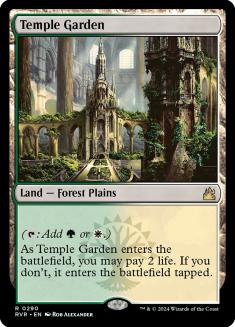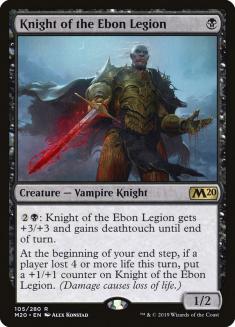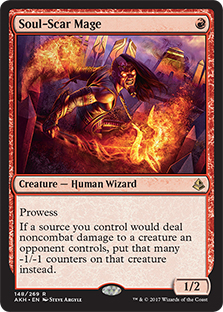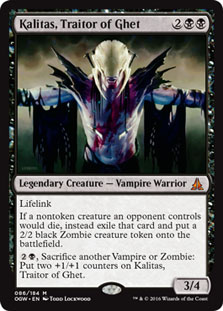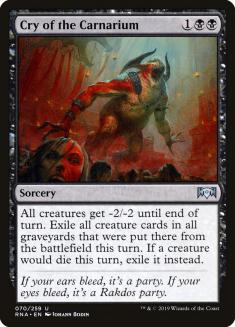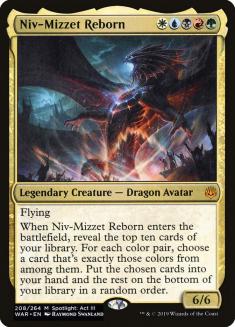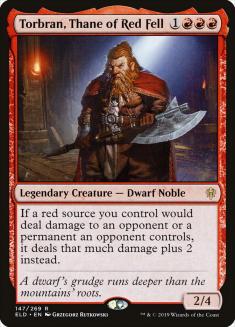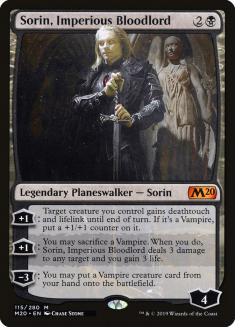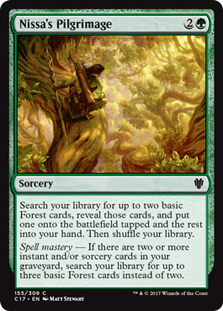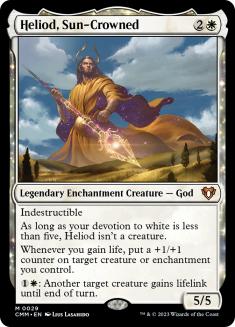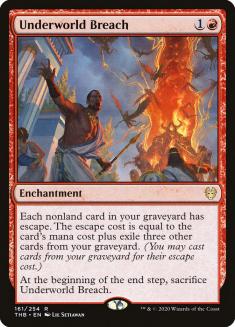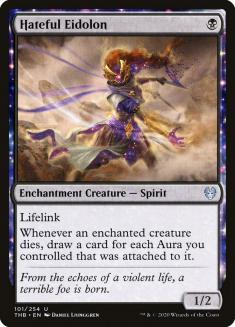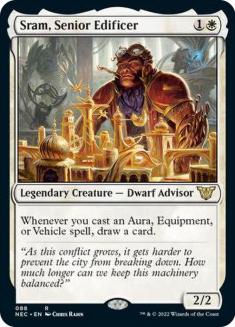We live in the internet-based future, and I’m extremely grateful for this. Someone else can be the one who decides to go crazy enough to try to associate a bunch of decklists, names, and match results from the Wizards of the Coast (WotC) website-maze, and they will just post them in public because that’s how things work.
Take a good look at these numbers, then don’t play Big Red, Green Aggro, or Five-Color Niv-Mizzet.
Dimir Inverter Flips the Format
It’s impossible to start discussing this weekend’s results with any deck other than Dimir Inverter, and it’s possible the discussion should end here.
Dimir Inverter was the breakout deck of this weekend, but it was an open secret. The deck first gained some Twitter traction about two weeks ago, had some initial success in that weekend’s Magic Online events, and then had its bubble burst on Wednesday with Piotr Glogowski Tweeting out his decklist half a day before the submission deadline. By the time SCG Richmond rolled around, we had significant amounts of content rolled out about the deck.
Creatures (8)
Planeswalkers (3)
Lands (25)
Spells (24)

Five of the Top 8 of Players Tour Nagoya played Dimir Inverter, even if Shintaro Ishimura was a bit less Dimir and a lot more Mono-Blue Devotion. All four teams in the Top 4 of SCG Richmond played the deck.
But in Europe, only Piotr Glogowski made the elimination rounds with the deck and it had a resoundingly medium weekend.
What happened?
Honestly, I have no idea. The decklist submission deadline for Japan was after the one in Europe by a large amount, so it wasn’t people in Europe having better ability to change their sideboard cards. The successful Inverter of Truth decks in Japan were all over the place with their card choices, so it wasn’t people with a little more time copying a tuned list from Piotr. The event metagame breakdowns were reasonably similar. My best guess is this split is just random chance.
Unless having the extra day of practice for a Saturday event versus a Friday one matters that much. Dimir Inverter certainly looked finicky all weekend, and your graveyard being one card larger or smaller could be the difference between a clean win and a loss. And I do mean larger or smaller, with the sizing being different in different cases. The idea that this weekend is the floor of its performance as people get better with it is a scary prospect.
Great or merely good, Dimir Inverter is the deck to beat next weekend at Players Tour Phoenix and SCG Philadelphia. Fighting against a Thoughtseize and cantrip combo deck is always a tough task, but it is doable. The goal is stacking different hoops for them to jump through and making them thread the most precise needle every game.
One easy button is Gideon of the Trials. It isn’t infallible, but it making an emblem does force them to go down the route of a removal spell since the +1 shuts off Inverter of Truth attacking your planeswalker. It won’t win a game if you do nothing else, but it is a narrow path they have to navigate.
Unmoored Ego is the other reasonable single-card knockout option, though I would look into nonblue versions of this effect to avoid Mystical Dispute. Lost Legacy, Slaughter Games, Infinite Obliteration, and Stain the Mind are all great options.
Your own mill or graveyard hate forces Dimir Inverter to either win the turn they cast Inverter of Truth or to control a Jace, Wielder of Mysteries through an untap step. Both are doable but add significant setup time to the combo. I’m a big fan of this strategy if you are presenting a reasonable clock, like Leyline of the Void out of Mono-Black Aggro. Mass hate like Leyline also does double duty, cutting their ability to Dig Through Time their way out of your interaction.
In the traditional combo disruption camp, discard is way more effective than countermagic. The same play pattern always occurs when a combo deck with its own discard and cantrips faces off against these. Counterspells require being extremely reactive, giving the Dimir Inverter player time to set up their own discard to clear the path. Disruptive discard just leaves them scrambling. The exception to this is a pure flash gameplan, where your counterspell can be left up without costing you turns of battlefield development.
Uro Gets Figured Out
The absolute best performing deck this weekend was a secret prior to Friday: Sultai Delirium. It’s a classic shell for success: Thoughtseize plus the other fine answers, a core threat that clocks and stabilizes extremely well, a solid spread of card advantage, and some end-game inevitability for anyone else crazy enough to play midrange. Not only did Joel Larsson hoist the trophy, two extremely similar lists were in the top-finishing Pioneer lists despite being an extremely small portion of the metagame.
As I said two weeks ago in Fact or Fiction: “When Uro lives up to the hype in a month from now, I won’t be shocked.”
Creatures (19)
- 1 Scavenging Ooze
- 2 Courser of Kruphix
- 4 Satyr Wayfinder
- 3 Jace, Vryn's Prodigy
- 1 Tireless Tracker
- 1 Emrakul, the Promised End
- 1 Ishkanah, Grafwidow
- 1 Walking Ballista
- 1 Murderous Rider
- 4 Uro, Titan of Nature's Wrath
Planeswalkers (3)
Lands (23)
Spells (15)

Uro is a peak example of the secret core concept of Pioneer. The Return to Ravnica era was the start of the best card advantage just being attached to a threat. Control doesn’t really exist in this format; even the Teferi, Hero of Dominaria decks are just pseudo-midrange decks aiming to slam their unbeatable planeswalker. Chonky Red was as much of a control deck since its two-drop was Abrade.
For anyone who has looked at the delirium mechanic before, there isn’t a lot of precise science here. The key is just that Uro is really, really good at its job. A 6/6 is big and kills quickly. Gaining three life stabilizes really well. It draws cards so answers are ineffective, and it has repeatable escape so answers are ineffective. You don’t even have to draw the card. You can just Satyr Wayfinder past it, and look, you found your game-ender. Honestly, Traverse the Ulvenwald is in this deck as much because it immediately goes to your graveyard as it is to support some delirium Emrakul end-game.
This is why there is so little concern to having good types across your spells. Just have good spells and the rest works itself out. Nissa, Who Shakes the World might also play a part in that as a way to cast Emrakul, the Promised End the hard way.
It also can’t be understated that Uro is part of what lets this deck play three colors, even if it does require a hard commitment to few basic Swamps. Pioneer is a proactive, aggressive format and the mana is either slow or painful. If you have clean sources of lifegain, that mitigates a lot of the pain issues, and the extra lands from Uro triggers help slot in tapped shocklands for hidden life savings. The same interaction can also be stated for the fastlands, with an Uro trigger being a convenient way to sneak down a later tapped one.
If you want a way to improve this deck, figure out how to balance things so you can combat Rest in Peace effectively. None of your cards are truly dead without a graveyard, but they are way less effective at accumulating value and winning the game. Tireless Tracker is a good start, but I would like to see some more non-graveyard-based threats sprinkled through the list.
Spirits Adds a Third Color
The other key breakout deck of the weekend was Bant Spirits. With three copies across the Top 8s and a win, it feels like we have clearly shifted the baseline up from the older stock Azorius Spirits lists.
Creatures (32)
- 4 Rattlechains
- 4 Spell Queller
- 4 Selfless Spirit
- 4 Mausoleum Wanderer
- 4 Nebelgast Herald
- 4 Supreme Phantom
- 4 Empyrean Eagle
- 2 Spectral Sailor
- 2 Brazen Borrower
Lands (24)
Spells (4)

There were minor disagreements on which one-toughness creatures to trim between the lists, but the formula is the same. All creatures plus Collected Company, then twelve green sources between shocklands and Botanical Sanctum.
The key here was realizing that Spirits is actually just Modern Humans with flash.
Ross Merriam outlined a case for and against Curious Obsession previously, but I think it was always not a good card in Pioneer Spirits. The entire rest of your deck is incremental. It is hard to exchange your cards singularly for your opponent’s. Your disruption is largely incidental to your goal of making a bunch of power and then hitting them with it. The flash aspects of the deck just let you retake the initiative from decks with harder-hitting one- and two-drops via tactical play.
With that view of the deck, why not just play the card that is two creatures in one card?
Maybe the turning point was actually Inverter of Truth. We already discussed how Pioneer mana is painful, but Dimir Inverter really isn’t exploiting that. If you are dying to your opponent’s library size and not Lightning Strike, who cares if you shockland or not?
Where Are the Beats?
Monocolored aggressive decks had a mixed weekend, and only some of that is Dimir Inverter’s fault.
If you’re attacking, you need to respect the Dimir Inverter deck’s ability to turn into a pseudo-control deck. I’m unsure Mono-Red Aggro or Mono-Black Aggro actually does that. They don’t have the card selection tools to mix it up and play a middling role against all the Dimir Inverter plans and just have to jam some hate and attackers and hope that works out and the Inverter deck repositions properly.
The other squeeze comes from the fact that the aggressive one-drops aren’t that good in the face of bigger options. If you stick with the aggro core but bulk up to fight midrange battles, you will get wiped off the map by Dimir Inverter the way Chonky Red was, but if you stay low to the ground, you are conceding your matchup against the rest of the field.
Creatures (27)
- 4 Monastery Swiftspear
- 4 Abbot of Keral Keep
- 3 Kari Zev, Skyship Raider
- 4 Soul-Scar Mage
- 4 Goblin Chainwhirler
- 4 Bonecrusher Giant
- 4 Torbran, Thane of Red Fell
Planeswalkers (1)
Lands (24)
Spells (8)

The key to monocolored aggro’s success will be an upgrade to raw power level at the lowest mana cost possible. Torbran, Thane of Red Fell is a clear power play for red, but I’m also into Dmitriy Butakov’s move to Vampires and Sorin, Imperious Bloodlord in Mono-Black. If you cared about Azorius Control, maybe bringing back Dread Wanderer matters, but Sorin is both fast and overpowering on a level that can compete with decks going bigger.
The idea of playing any of these decks into Uro scares me, but maybe you can win by fighting on slightly closer ground.
Odds and Ends
Some quick hits from the rest of the metagame.
Ramp decks without Uro are just gone. This isn’t the time for Ugin, the Spirit Dragon.
Heliod, Sun-Crowned was present with solid results. I’m skeptical of the Dimir Inveter matchup even with Gideon of the Trials, but if that deck starts slipping, expect Mono-White Devotion or Heliod Company to be a great choice.
Lotus Field / Underworld Breach had fine results and a Top 8, but I’m not advising anyone play that deck when the best decks are Thoughtseize combo, Spell Queller aggro, and even more Thoughtseizes.
Finally…. this nonsense.
Creatures (17)
- 2 Favored Hoplite
- 4 Sram, Senior Edificer
- 3 Aphemia, the Cacophony
- 4 Alseid of Life's Bounty
- 4 Hateful Eidolon
Lands (20)
Spells (23)

This deck is hexproof-less Hexproof. The premise is that Hateful Eidolon makes the cost of shoving all-in against spot removal significantly lower, and that if you lower your standards past the hexproof mechanic there are enough reasonable Aura targets that you can overload on numbers to ensure your hands aren’t terrible.
Describing this as anything less than a targeted risk would be wrong. You can clock under the Dimir Inverter deck, but exile removal or just a general overload of removal with a solid end-game is a huge problem. This feels like a deck that was good exactly this weekend and will fall away, not because it gets Back to Nature’d, but because the aggro decks it crushed are supplanted by Deputy of Detentions.
The stage is set for a completely new Pioneer next weekend. Pioneer has proved itself fairly adept at adapting to a new target and pushing a best deck back into the metagame mix week after week. Dimir Inverter threatens a lot of broken potential as a delve-card draw combo deck, but is also capped and facing real challengers that are fundamentally different from the decks we previously saw.
If the Top 8s next weekend aren’t all just Dimir Inverter, anything could happen.

